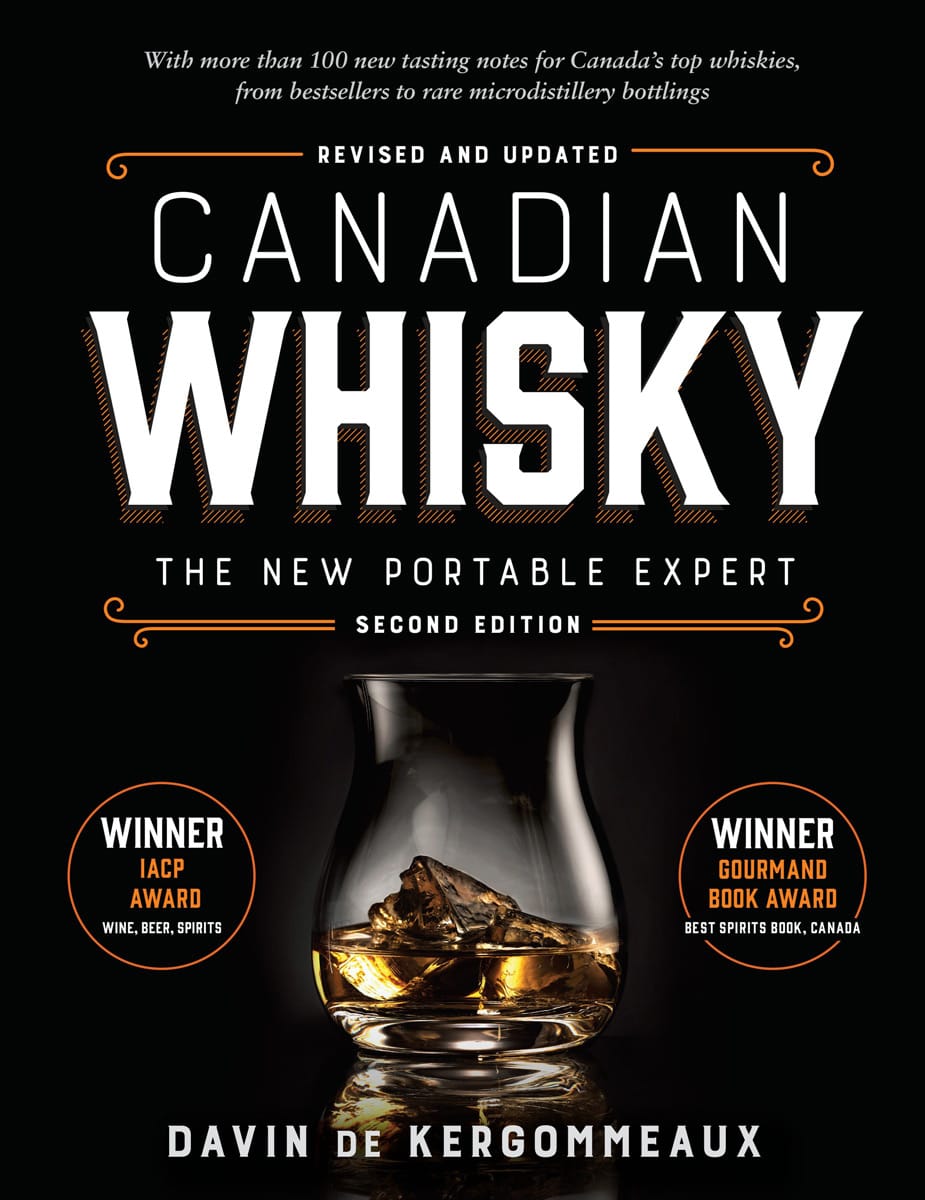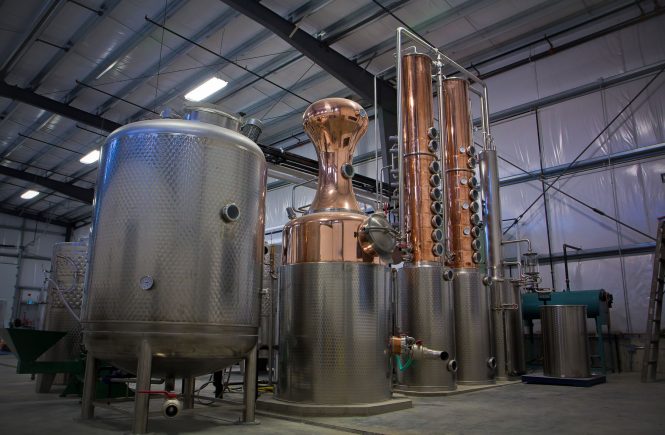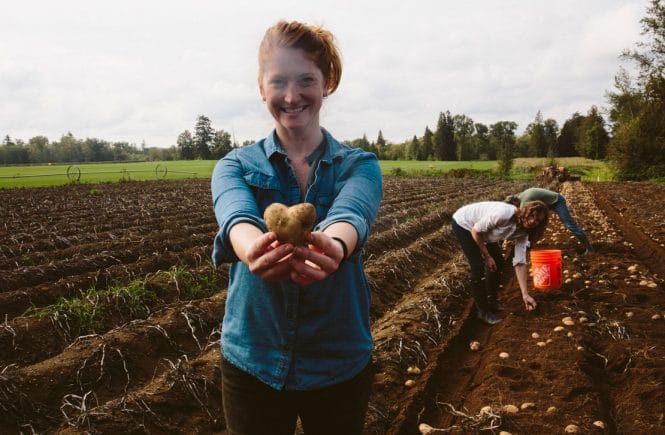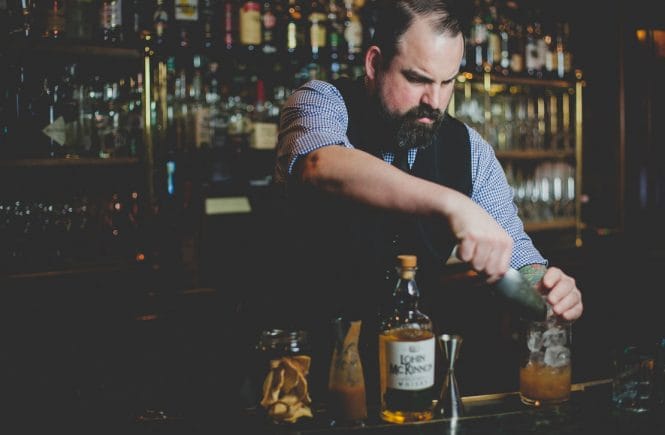
When it came out in 2012, Canadian Whisky: The Portable Expert established Davin
de Kergommeaux as the foremost authority in the country on the spirit. As the second edition is published, The Alchemist asked its author about the state of the Canadian industry today.

When did you realize it was time to write a second edition?
The first edition generated a lot of interest in Canadian whisky when it was published in May 2012. However, other than the groundbreaking work of John K. Hall at Forty Creek distillery, at the time, the Canadian whisky industry was fairly static. So, even a couple of years later the book was still pretty much up to date.
At the same time, American independent labels were finding great success buying top-quality Canadian whisky and selling it in the U.S. as if it was American rye. Behind the scenes, Canadian distillers had begun experimenting with the bigger, bolder whiskies demanded by the new American cocktail culture.
Things changed little in the first few years after the book was published, but then, all of a sudden, the distilleries began to release dozens of new Canadian whiskies, and connoisseurs began talking about them in glowing terms.
As well, microdistilling has burst onto the scene in Canada in just the past five years. It is still an incredibly small part of the overall market, but because it is new, microdistilling is generating a lot of interest in Canadian whisky, and some of the new whiskies, although still quite young, are very respectable.
When I wrote the first edition there were maybe three or four small distilleries making whisky in Canada. The new edition includes more than 40. So, the Canadian whisky sector has grown and changed tremendously and I wanted to get a new edition out before the first one was out of date.
Are you surprised at how the industry here has developed? Is there anything uniquely Canadian about it?
It pleases me that Canadian whisky is beginning to get recognition among connoisseurs on the world stage. The only thing that surprises me is that it took so long – we’ve always had good juice. There have been pockets of aficionados who knew the high end, but we have been best known for our mixing whiskies. This is more a problem with marketing than production, though.
Finally, the connoisseur-quality Canadian whiskies are getting the spotlight. However, I am surprised, and to some degree disappointed, at how very conservative many of the microdistillers have been in their approach to making whisky in Canada. Some of them talk about the importance of terroir, then set out to make Scottish-style single malts or American-style bourbons.
It does not matter how good their single malt is, it will never be Scotch. One of the very earliest Canadian microdistillers, Still Waters in Toronto, learned this lesson early on. They began making single malt whisky, and did a fine job of it. Then they experimented with rye and it just took off. Demand was so great for their rye that it eclipsed their single malt and now makes up more than half of their production.
Is Canadian whisky properly recognized at home and abroad? If not, do you see that changing, and how?
Canadian whisky is still far from getting its due. Among top whisky writers, bartenders and connoisseurs it is beginning to gain more recognition, but the general population often think of it as the light mixing whisky they drank too much of in university.
That said, Canadian whisky is experiencing a real renaissance and the producers are moving quickly to serve this segment with top-quality, rich, bold new whiskies. Yes, I see the reputation of Canadian whisky gaining ground and sales figures confirm this, especially at the premium and deluxe end of the scale.
What has the rise of microdistilleries meant to the industry in Canada?
So far, not a whole lot. Whisky takes time to develop in the barrel and the small distillers just haven’t been around long enough to make much of an impact. That said, they are doing a lot to draw attention to the category. They are new, they have exciting stories and they get a huge amount of coverage by the media. Some of their other products – gins and so on – are already really approachable. I think as their whisky matures, some will begin to draw a lot of favourable attention. Already, Yukon Distillers and Still Waters are gaining international recognition. Many others will not be far behind them.
Vancouver is currently the epicentre of micro-distilling in Canada. There are already some very promising whiskies coming from B.C. — Lohin McKinnon, Shelter Point, Odd Society, and a handful of others.
How do the B.C. microdistilleries fit into the national picture? And how do you see them progressing on the world stage?
Vancouver is currently the epicentre of microdistilling in Canada. I think it is a wonderful idea to give them tax incentives to produce spirits from local grains and fruits. Here we get back to terroir. There are already some very promising whiskies coming from B.C. I am thinking of Lohin McKinnon, Shelter Point, Odd Fellows and a handful of others. I like that Shelter Point has moved beyond single malt and am sure others will begin to do so as well.
In time, if their product is consistently good, the world will come to them. It starts with a buzz and soon everyone wants the latest great thing. The key is to be scrupulously honest about what they are doing and patient enough to wait until it is ready.
Are we still catching up, about where we should be, or punching above our weight?
Yes, B.C. still has a way to go. The industry began later than in some other parts of Canada, but it is not really a game of catch-up. When their whiskies are ready they will gain recognition based on the contents of the bottles.
Canada, overall, is way behind the U.S. in the development of a microdistilling industry but we are beginning to be recognized, and B.C. will too. The ones most likely to fail are those that are in too much of a hurry to get to market. Those that try to accelerate the maturing process are doomed.
I have seen this in the U.S. already. Microdistillers there have tried heating/cooling cycles, small barrels, special barrels, adding wood chips, all kind of things, and those that survived have for the most part switched to traditional methods and maturation times.
The economics of aging mean a single malt distillery needs to take the long view and be comfortable with risk. Do you expect to see some fail despite having a good product?
Yes, those that rush to market have a good chance of failing unless they have deep pockets and can survive initial disappointments. Why are they making single malt in the first place when it takes so very long to really mature, yet rye can be ready in just a few years? Why are they making single malt when the Scottish have already perfected it, have the name recognition, can make it more economically, and Canada already has a strong reputation for other whisky styles?
My advice to new microdistillers is always the same: Develop a strong business plan that demonstrates how they will survive financially until their whisky is ready. Make gin, vodka or other spirits to generate early cash flow; buy finished whisky from others until theirs is ready.
It is also important that they do the difficult work of developing the business plan themselves and not rely on consultants. This is a highly regulated and taxed business and they have to understand it inside and out and the only way to get that level of understanding is to do the painful preparatory research themselves.
Which Canadian whiskies are you most excited about right now? Are there any that have really surprised you?
Not that I am particularly a fan of old whiskies, but the new Canadian Club 40 Year Old is staggeringly good. Just wonderful stuff. And it is priced at $250 a bottle. The equivalent Glenfiddich, on the other hand, sells for more than $8,600 a bottle.
I am also really taken by the new Wiser’s 35 year old. I think it may be the most enjoyable and interesting whisky I have ever tasted. It sells for around $175, again an unbelievable bargain when you look at the quality.
And then there is a 35-year-old from Canadian Rockies, a small independent in Vancouver. This whisky was produced by Highwood Distillers in Alberta and was intended for the Asian market, but a bit of it has shown up in liquor stores in B.C. and Alberta. The price, if I remember, is in the $750 range.
How would you persuade a whisky lover, devoted to Scotch, to take Canadian whisky seriously and give it a chance?
I don’t have a problem with people being loyal to a particular whisky style, be it Scotch, bourbon or whatever. However, one good way to introduce a new whisky or whisky style is to have people taste it without knowing what it is. I have seen that people like Crown Royal Northern Harvest Rye a lot better if they don’t know that it is Canadian.
A while ago, I did a tasting of all Speyside single malts for a Scotch single malt club. I inserted a new Canadian whisky from the Wayne Gretzky distillery into the lineup. People assumed it was Scotch and ranked it very highly; I think it was the second favourite of the evening. They were surprised, but not unhappy when they found out that it was Canadian whisky, especially when they found out it was so affordable compared to Scotch single malts.
If you had one piece of advice for a new distiller entering the Canadian whisky market, what would it be?
Prepare a detailed business plan based on your own research … and don’t be conned by consultants who tell you there is a way to do it faster.
—Edited by Fiona Morrow.




